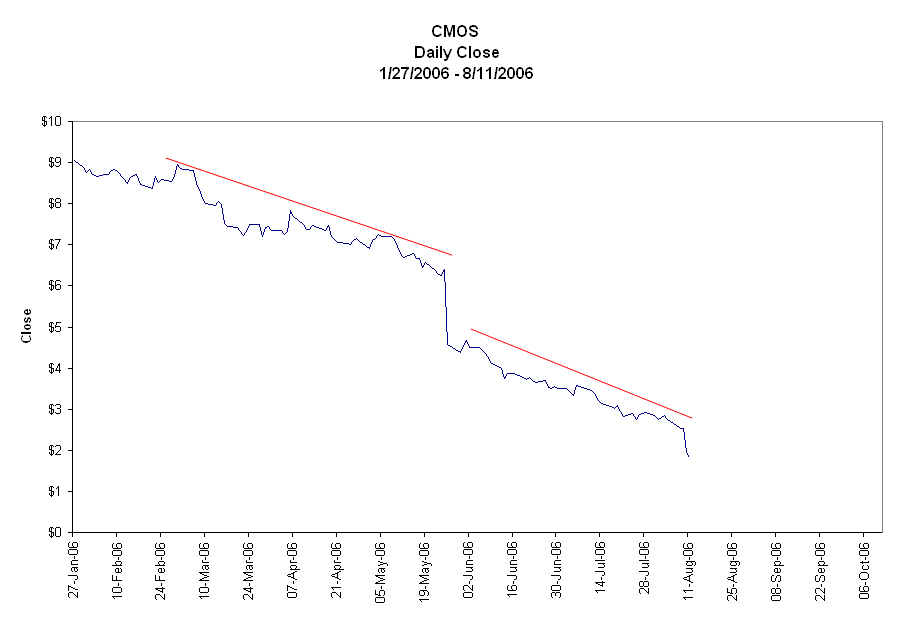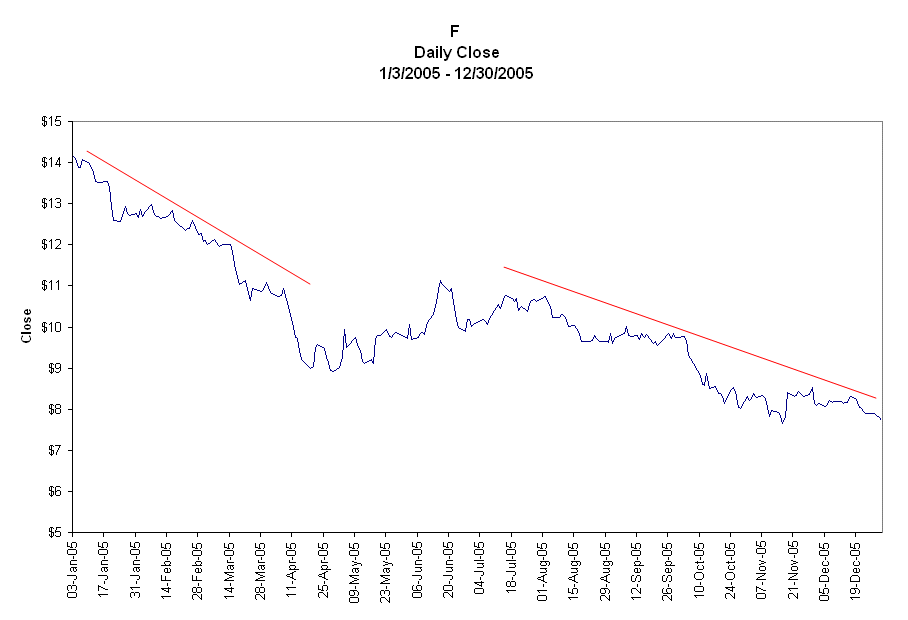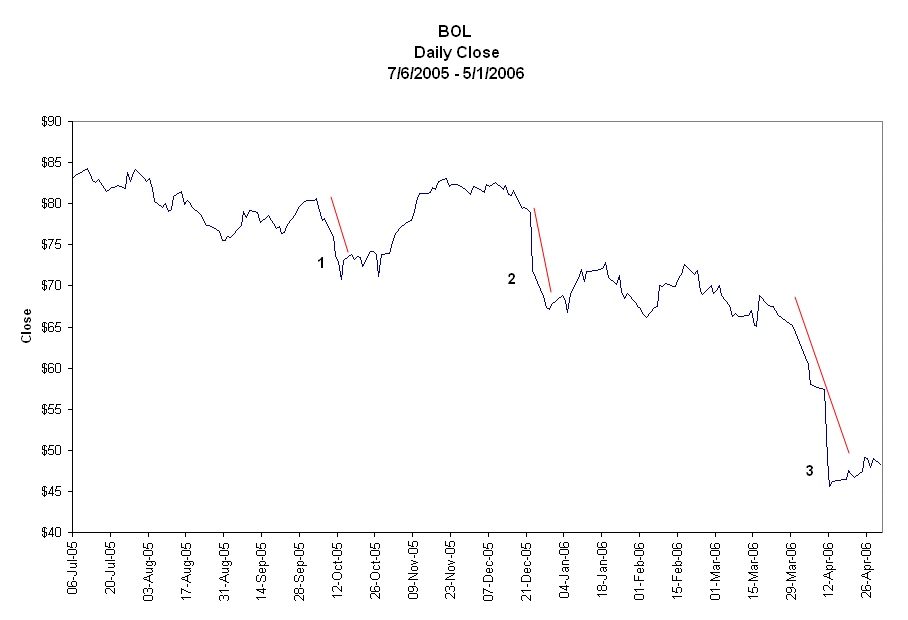Price Downsides Produce Losers
Most buy on the downside and sell on the downside investments lose money. So why are investors tempted to buy when prices are falling? Many people reason that they are getting a “bargain” when a stock moves down. After all, they reason, if the price has been cut in half, how much more could it decline? Well, it could decline a lot more.
Just because a stock has lost a significant percentage of its value, it should not be considered a good buy. An understanding of why the stock is down will help to convince you not to buy it. Is it a cyclical stock that will eventually assume a new cyclical upside? Is it a speculative stock that has run out of steam and investors no long love it? Is the company’s business model no longer appropriate? Is the company involved in a short-term scandal or legal dispute? Has it had a product recall? Did the company miss its earnings forecast? Is it forecasting lower future earnings?
Be patient and let the stock price stabilize and move back to the upside. If it never moves up or you lose interest, that is okay because you have not put any money in it. Just walk away from it and look for other stocks with upside entry points. I like to say, “Let the stock price come to you.” Do not chase a falling stock. This simple advice will ultimately save you piles of money.
Here are three stocks that went to the downside to become unprofitable investments. Remember these examples the next time you are tempted to buy a stock that is on the downside.
Steady Downside Produces Only Four Percent Winners
Credence Systems Corp. (CMOS), a semiconductor testing company, peaked at $9.05 on January 27, 2006, and then moved to the downside in which investors found it almost impossible to make money.
Of the 9,316 buy and sell combinations based on the daily close from January 27, 2006 through August 11, 2006 only 394 (4.2%) made money while 8,922 (95.8%) did not.

One-Year Downside Yields 15.89 Percent Winners
Most Ford Motor (F) investors did not fare well in 2005. The stock closed the year at $7.72, down 45.4 percent.
 Because Ford was on the downside most of the year, the unprofitable buy
and sell combinations easily outnumbered the profitable ones 26,601 (84.11%)
to 5,025 (15.89%).
Because Ford was on the downside most of the year, the unprofitable buy
and sell combinations easily outnumbered the profitable ones 26,601 (84.11%)
to 5,025 (15.89%).
Recurring Price Collapses Make Profits Unlikely
The price downside always leads to losses for most investors. And a downside that is includes precipitous drops in price resembles a cascading waterfall and is particularly nasty. You should avoid stocks with such a price pattern.
The price chart of Bausch & Lomb (BOL), an eye-care provider, shows a cascading downside with three significant prices drops.

Only 3,855 (18.1 percent) of the 21,321 buy and sell combinations from July 6, 2005 through May 1, 2006 made money. That means that 17,466 (81.9 percent) were unprofitable trades.
Related Articles
3D Surface Chart of Returns: Upside Downside Price Pattern for Chipotle Mexican Grill
Analyzing Price Upsides and Downsides
Brief Introduction to Elliott Waves
Cyclical Price Pattern - An Opportunity to Make Money
Introduction to Stock Price Patterns
Stock Mareket Follows Multiyear Price Cycles (January 1871 - Present)
